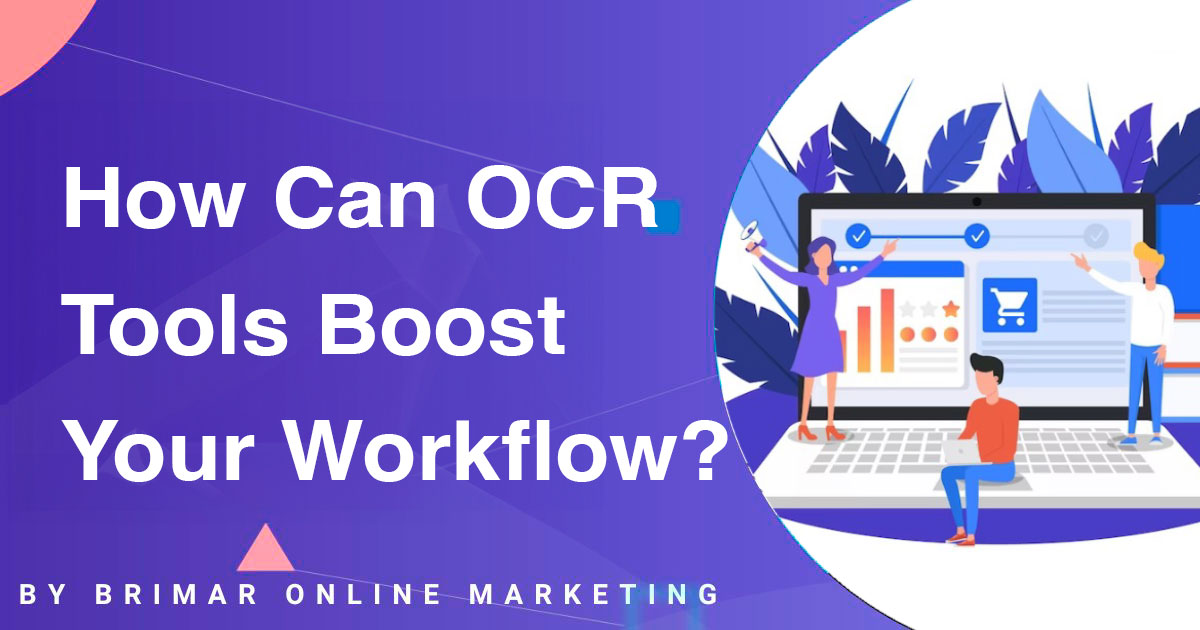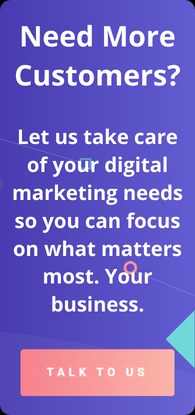
Are you tired of extracting data from papers, PDF files, and images by manually typing it?
Isn’t it a very tough and time-consuming job?
Yes, it is.
Then how can we automate this task and save time and energy?
The answer is by using OCR technology.
The OCR tools are very efficient and advanced tools that can extract text from images and scanned documents in no time.
These tools can also transform handwritten text into machine-readable format.
With the advancement of technology, there are now some OCR tools that integrate AI, which enhances the accuracy of the tool.
Let’s discuss how the OCR tool can improve your workflow.
What is OCR Technology?
Optical Character Recognition (OCR) is a sophisticated technology that can recognize and extract text from a wide range of sources, such as scanned documents, images, live captures, and other media.
It is also useful for extracting and modifying handwritten text.
OCR technology is very important in professional work because it allows companies to easily access and analyze a large amount of data from various sources.
Businesses that use OCR technology can reach and interact with customers much faster and more effectively.
Need a Sales Funnel that Converts?
Struggling to turn clicks into customers?
A high-converting sales funnel could be the missing link. We’ll help you build a simple, straightforward, and effective funnel that guides your visitors step-by-step, so they take action, not just browse.
How Does OCR Work?
An OCR system is made up of both hardware and software parts that work together to convert images to text that can be used for data processing.
An OCR system’s main tasks are to access images, do preprocessing, segmentation, feature extraction, recognition, postprocessing, and output.
For image access, you need to use a scanner or camera to take a picture of the document.
The quality of the image for OCR is improved by steps like noise reduction, clearing, and skew correction.
Content segmentation separates text from non-text elements, and feature extraction takes properties from each character or word that has been segmented to tell them apart.
Recognition checks each extracted character or word’s properties against known patterns or templates to find the best match for the alphabet.
To make OCR results better, post-processing methods can be used to fix mistakes and make the data more accurate.
Benefits of using OCR
There are several benefits to OCR that can improve our workflow efficiency. Some of them are listed below.
Image to text technology offers numerous advantages, particularly in document management.
We all know that a business has a lot of different kinds of documents, and keeping track of them is hard and takes a lot of time.
However, image-to-text technology makes this task easier.
Let us talk about each of its benefits that boost your workflow, directly or indirectly.
1. Saves money

To manage documents by hand, you need a group of people to do it.
But if you use an online tool to change an image to text, all you need is a smart device, like a cell phone or tablet.
You need to take a clear picture of your file, and this online tool will turn it into text.
So, it saves the cost of extra employees and also saves paper sheets that cost too much.
2. Increases efficiency
It takes a lot of time to type out a document on a computer or mobile device.
Additionally, a writer will need to be hired by a company if it needs to digitize numerous documents every day.
This job could be done quickly with the image to text converter, though.
It helps you focus on other important tasks and saves you valuable time.
3. Document Security
We know that paper documents are not very safe, so the image to text converter technology is mostly used to keep data safe.
Environmental factors like rain, fire, and other hazards could harm it.
If paper documents are turned into digital documents, they can be protected from damage.
4. Accurate results
When you write by hand, you are at risk of making an excessive number of errors.
Many mistakes, like typing mistakes, can be avoided by using online tools like image to text converters.
An image to text converter tool can help you organize your documents more accurately, so you should use it to improve how you handle your documents.
5. Saves space
Digital documents like pictures or scanned pages or paper documents like sheets of paper take up a lot more space than text documents.
Using a converter to turn images into text saves a lot of space in your office or on your phone, computer, or other device.
6. Ease of access
It is nearly impossible to find a document among a stack of papers.
If you work with papers every day and have a lot of customers, it might take a while to find their files.
Customers might not like this practice.
If you turn a paper document into a digital one, you can search the file by the customer’s name alone.
It will help you work efficiently and enhance your workflow.
How Does OCR Improve Workflow in Different Businesses?
Optical Character Recognition (OCR) is a reliable technology that is used a lot in business.
Basically, it lets people take text out of an image so that they can easily change it in a database or word processor.
It turns an image that is hard to read into machine-readable text.
OCR is used in many fields to make processes easier and boost workflow.
Some of the most common uses are:
OCR in Education

This technology converts scanned books or old papers into editable Word documents.
It can be used by students who are blind or have low vision.
It contributes to the development of accessible online learning resources.
It also speeds up the grading process by converting handwritten test answers into digital format.
OCR in the Healthcare Field
OCR scans and digitalizes medical reports, insurance claims, and patient records for the healthcare industry.
Healthcare professionals can use this technology to scan documents and pull out the information they need.
It makes things more accurate overall and cuts down on mistakes made when entering data by hand.
OCR makes administrative tasks much easier and improves patient care by turning handwritten notes and printed text into digital formats.
OCR in Tourism
OCR can be used in many ways in the travel business.
This technology changes the travel industry by solving problems that both travelers and industry professionals face, like not being able to communicate in the same language.
You might want to use a translation app like Google Translate when you go to a foreign country.
You can take a picture of a menu or street sign and have some of these apps translate it for you.
OCR in Finance and Banks
A lot of paperwork is processed by OCR technology in banking and finance.
This includes things like loan requests, bills, and financial reports.
These days, banking apps let you take a picture of a check, and the OCR turns the information on the check into data.
The amount, date, payee, and other information about the deposit are automatically entered into the bank’s database.
This makes processing faster.
Why OCR Software Is the Missing Link in Digital Transformation
Let’s face it: many business processes still rely on outdated, paper-based systems that slow everything down.
From handling legal documents to managing employee records or processing handwritten forms, the time-consuming task of manual data entry becomes a bottleneck.
That’s where OCR software becomes essential to save time and fundamentally transform how businesses operate.
By digitizing physical documents and extracting text with high accuracy, OCR automation replaces repetitive tasks with streamlined workflows.
The Power of OCR Across Various Industries
The power of OCR isn’t limited to one niche.
It touches everything from healthcare providers to financial institutions, human resources departments to customer service teams.
Modern OCR systems can scan documents like bank statements or loan forms and extract relevant data in seconds in the financial industry, where processing times are critical.
This helps teams minimize human error and stay compliant with regulatory requirements.
Healthcare providers use OCR software to digitize patient records, reduce paperwork, and make sensitive information more accessible and secure.
By transforming scanned documents into searchable data, they enhance data accuracy while freeing staff from tedious tasks.
In education, OCR solutions help institutions digitize textbooks, handwritten notes, and exams, giving students and educators easy access to specific information without digging through paper archives.
Even small businesses can use OCR to simplify invoicing, expense tracking, and document management, freeing up storage space and making their teams more agile.
Going Beyond Scanning. OCR + Artificial Intelligence
One of the most exciting benefits of OCR technology is its integration with artificial intelligence and machine learning.
These aren’t just buzzwords; they’re real enhancements that make OCR smarter over time.
For example, convolutional neural networks (CNNs) help OCR engines recognize patterns in poor image quality or unusual handwriting.
Over time, the more you feed the OCR tool, the better it becomes at recognizing characters, layouts, and even document types.
That means even an image file snapped with a mobile device can yield highly accurate, editable data.
Whether you’re converting a business card, a legal contract, or a receipt into a searchable format, the combination of OCR and AI delivers fast, reliable results.
Key Features to Look For in the Best OCR Tools
Not all OCR solutions are created equal.
If you’re in the market for the best OCR tools, here are some key features to prioritize:
- Advanced Features: Look for OCR systems that go beyond basic text recognition. Features like layout analysis, table detection, and handwriting recognition are crucial for dealing with different types of documents.
- Integration Capabilities: Seamless integration with your existing document management systems or cloud platforms (like Google Drive) is necessary for a smooth workflow.
- Support for Various Formats: Your OCR engine should support PDF documents, image files (JPG, PNG, TIFF), and digital camera captures from mobile devices.
- Data Security: If you’re handling sensitive data, medical records, contracts, and customer files, ensure your OCR software follows strict data protection protocols.
- OCR APIs: Developers will appreciate OCR APIs allowing easy customization and integration into proprietary systems or apps.
How OCR Improves Customer Experience and Satisfaction
When you improve internal workflows, you indirectly improve customer experience, too.
Your customer support team can instantly retrieve relevant information from a scanned document.
Or your finance team can process loan applications faster.
Or your HR department can onboard new hires without making them fill out forms by hand.
This creates a ripple effect: faster service, fewer mistakes, better communication, and higher customer satisfaction.
When OCR helps your team members focus on what matters most, solving problems and building relationships, it’s a win.
Real-Time Insights with OCR and Data Analytics
Here’s another hidden gem of OCR automation: the ability to feed extracted data directly into data analytics platforms.
You’re a retail business collecting feedback forms, invoices, and inventory records in different formats.
Instead of letting that valuable data sit in filing cabinets or PDFs, you can use OCR software to digitize and organize it.
Once it’s converted into editable data, you can run analytics on it, spot trends, flag issues, and make smarter decisions.
It’s like turning a cluttered attic of documents into a goldmine of actionable insights.
OCR. A Game-Changer for Human Resources
In the HR world, document digitization can be life-changing.
From processing resumes and employee files to scanning legal documents and benefits forms, OCR software helps HR professionals eliminate paper-based delays.
Instead of spending hours on data entry, HR teams can focus on hiring the right people, improving employee experience, and staying compliant with labor laws.
With OCR, every scanned document becomes searchable, sortable, and secure.
Addressing Common Concerns. Accuracy and Adaptability
Some businesses hesitate to adopt OCR tools because they worry about data accuracy, especially with handwritten documents or poor image quality.
But thanks to technological advancements, today’s OCR software is built to adapt.
Machine learning continuously trains the system to reduce errors, even in complex cases.
Features like pattern recognition and contextual analysis allow OCR engines to interpret complex characters, correct typos, and handle different document layouts.
And if you’re working in a fast-paced environment that deals with different types of documents daily, rest assured, modern OCR systems are designed to handle it all with precision and speed.
OCR and Robotic Process Automation (RPA)
Looking to elevate your efficiency?
Combine OCR with robotic process automation (RPA).
This duo enables fully automated workflows.
For example, OCR extracts data from a scanned document, and then RPA bots input that data into your CRM or accounting software without human intervention.
This seamless integration removes human error from the equation, speeds up processing times, and frees up team members for high-value work.
In essence, OCR + RPA = lights-out operations for tasks that used to take hours.
Unlocking the Full Potential of OCR
If your organization still relies on manual data entry, stacks of physical documents, or outdated filing systems, now’s the time to change.
The benefits of OCR technology are too good to ignore, from improving data accuracy to reducing processing times, from boosting customer satisfaction to enhancing data security.
So whether you’re a startup, a healthcare provider, or a well-established business juggling thousands of files, an OCR solution fits your specific needs.
Start small.
Digitize one part of your workflow.
Experience the time saved, the stress avoided, and the clarity gained.
And remember, when your data is easy to access, your business grows easier.
Final Thoughts
Using OCR tools in your team’s daily work eliminates time-consuming tasks and slows down the workflow.
OCR can help your team’s workflow by digitizing files and automating data entry.
If your team uses OCR to collaborate, they will work faster, have more time to focus on skilled jobs, and be able to connect better.
These changes will improve the team’s overall performance, so OCR is useful for your team’s workflow and total output.
Our Digital Marketing Services Have Helped Our Clients Increase Their Revenue!
“I highly recommend Brimar if your looking to grow your online business. You will be satisfied with the high level of expertise and high quality of services. It has helped my business grow by leaps and bounds.”
CEO

